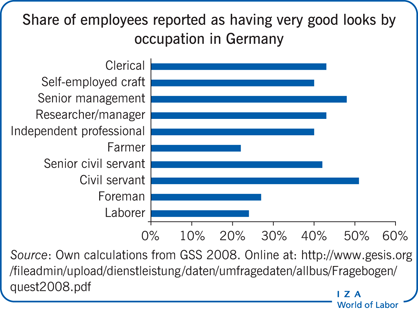Elevator pitch
It is a well-established view amongst economists that good-looking people have a better chance of employment and can earn more than those who are less physically attractive. A “beauty premium” is particularly apparent in jobs where there is a productivity gain associated with good looks, though this is different for women and men, and varies across countries. People also sort into occupations according to the relative returns to their physical characteristics; good-looking people take jobs where physical appearance is deemed important while less-attractive people steer away from them, or they are required to be more productive for the same wage.

Key findings
Pros
Employer discrimination against less-attractive workers is present in the labor market.
In occupations where looks are important, a beauty premium is apparent.
Good-looking people sort into occupations where the payoff to appearance is higher, while those who are less good-looking avoid them.
The way in which physically attractive people sort themselves in the labor market is different for women and men, which also explains why the “beauty effect” is more pronounced for men.
Cons
There is not one universal standard of beauty. It is also difficult to measure.
Beauty is not a fixed factor, but can be influenced by other factors such as cosmetics or plastic surgery, as well as confounded by confidence or personality.
It is difficult to separate out the effect of beauty from other less immediately recognizable attributes of individuals.
Customer discrimination cannot be easily disentangled from real differences in productivity.
It is not easy to make cross-country comparisons when perceptions of physical attractiveness differ.